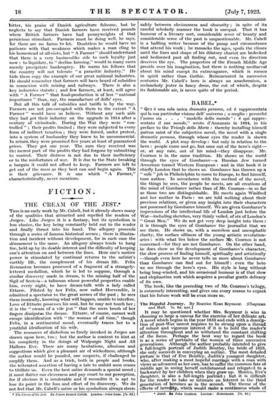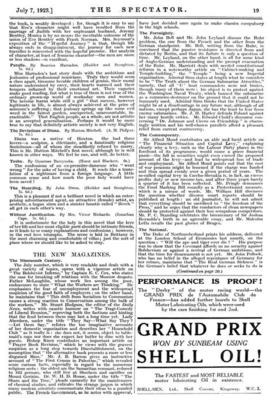The Hopeful Journey. By Beatrice Kean Seymour. (Chapman and Hall.
7s. 6d. net.)
It may be questioned whether Mrs. Seymour is wise in choosing so large a canvas for the exercise of her delicate art. A novel which begins in the year 1853 and ends with a descrip- tion of post-War unrest requires to be strung upon a thread of robust and vigorous interest if it is to hold the reader's attention throughout and so withstand the constant shifting of the focus. Perhaps the best way to regard the book is as a series of portraits of the women of three successive generations. Although the author probably intended to give a full-length portrait of Judith Bentley, the bride of 1853, she only succeeds in conveying an outline. The most detailed picture is that of Eve Bentley, Judith's youngest daughter, who, after making a most hopeful marriage with a man with views as advanced as her own, has to suffer the common fate at middle age in seeing herself outdistanced and relegated to a backwater by her children when they grow up. Monica, Eve's daughter, is also a full-length portrait; but it is difficult for the reader to take so intimate an interest in the third generation of heroines as in the second. The theme of the effects of heredity, which would make a continuous whole of * zabel. B7 John Cournos. London : Heinemann. Ps. 6(1.1
the book, is weakly developed ; for, though it is easy to say that Eve's character might well have resulted from the marriage of Judith with her unpleasant husband, Jeremy Bentley, Monica is by no means the inevitable outcome of the union of Eve Bentley with Frank Norman. Mrs. Seymour's exposition of the " Hopeful Journey" is that, though life always ends in disappointment, the journey for each new traveller is reinvested with the hopeful promise. Her analysis of character, at least of feminine character—the men are more or less shadows--is excellent.















































 Previous page
Previous page